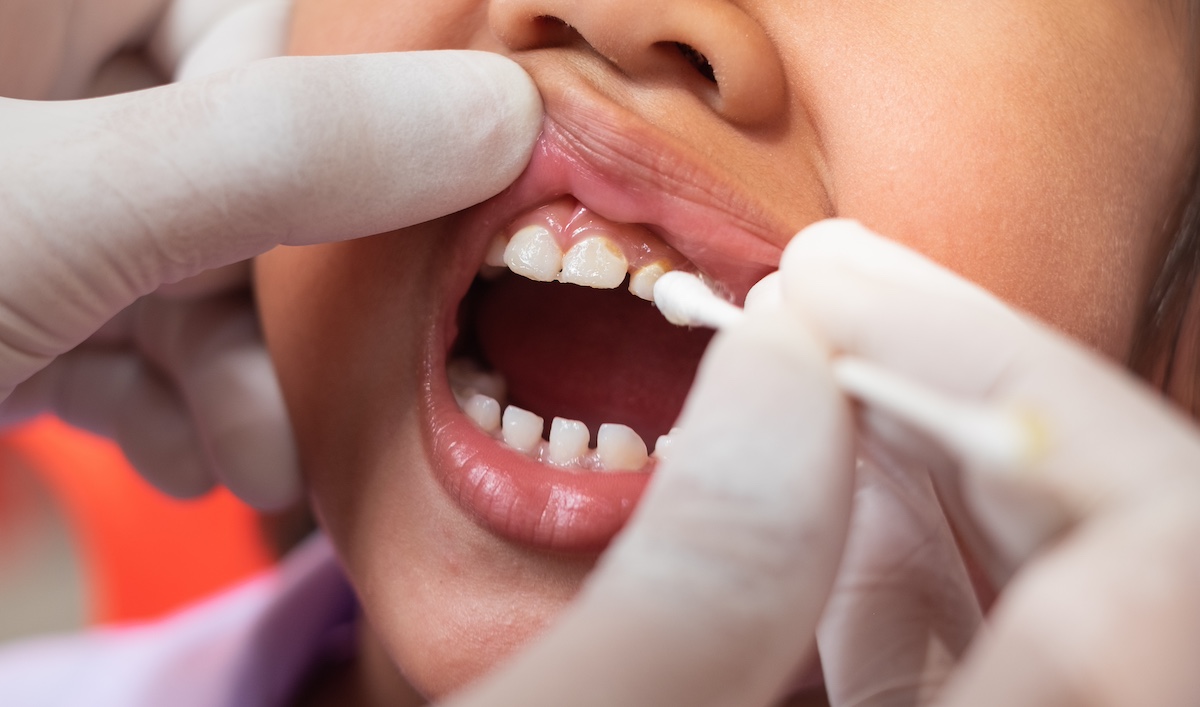Children’s oral health is a vital aspect of their overall well-being. And it’s not just about a beautiful smile. It’s about laying the foundation for a lifetime of healthy teeth and gums. Pediatric dentists are the unsung heroes in this journey, and they are dedicated to ensuring that every child’s dental experience is a positive one. In this blog post, we share five strategies pediatric dentists use to prevent cavities in baby teeth.
1. Early Diagnosis and Monitoring
Regular dental check-ups are crucial for kids. Pediatric dentists employ advanced diagnostic tools such as digital X-rays to detect cavities in their infancy. By identifying these dental concerns early, dentists can stage timely interventions, preventing further damage to the tooth structure. These check-ups not only include cavity detection but also ensure that a child’s teeth and jaws are developing correctly. Pediatric dentists also play a crucial role in identifying and addressing issues like misalignment or irregular growth patterns.
These regular check-ups also serve as an opportunity for children to become familiar with the dental environment, helping to reduce dental anxiety. By introducing young patients to the dentist’s chair at an early age, pediatric dentists create a positive association with dental visits and foster a lifetime of good oral health habits.
2. Dental Sealants
One of the more innovative tools in a pediatric dentist’s arsenal is dental sealants. These are protective coatings applied to the chewing surfaces of back teeth, which are more prone to cavities. The application process is painless and quick and creates a shield that keeps bacteria and food particles away from the tooth’s grooves, effectively preventing cavities.
It’s worth noting that dental sealants are a cost-effective solution for preventing cavities in baby teeth. Plus, they are durable and last several years, offering long-term protection. This means that a single application of sealants can provide ongoing protection throughout a child’s early years, reducing the need for more extensive and costly treatments.
3. Fluoride Treatment

Fluoride, a natural mineral, plays a significant role in cavity prevention. Pediatric dentists offer various methods for fluoride application, including gels, foams, and varnishes. This treatment strengthens the enamel, making it more resistant to acid attacks from harmful bacteria. While fluoride is highly effective in preventing cavities, it’s important to use it carefully and under professional observation to avoid fluorosis.
In addition to its cavity-fighting properties, fluoride aids in reducing tooth sensitivity. It strengthens the teeth, making them more resilient against the acids produced by oral bacteria. It also promotes remineralization, which can reverse the early stages of tooth decay and contribute to healthier and stronger baby teeth.
4. Oral Hygiene Education
Pediatric dentists don’t just treat dental issues. They also educate children and parents about maintaining good oral hygiene. Teaching kids the proper way to brush and floss, encouraging a balanced diet, and explaining the importance of regular dental care all contribute to cavity prevention.
In fact, oral hygiene education is a cornerstone of pediatric dentistry. By instilling good habits in children from an early age, pediatric dentists set them on a path to a lifetime of dental health. It’s not just about preventing cavities; it’s about nurturing a culture of oral wellness.
Pediatric dentists emphasize the importance of regular and proper tooth brushing. They educate children on the correct techniques, stressing the need to brush for at least two minutes, reaching all surfaces of the teeth. Flossing is also a key part of oral hygiene education because it helps to remove food particles and plaque from areas between teeth that a toothbrush can’t reach.
Additionally, pediatric dentists provide guidance on maintaining a balanced diet. They explain the impact of sugary and acidic foods on oral health and recommend healthier alternatives. By instilling these dietary principles, pediatric dentists help children make informed choices that contribute to cavity prevention.
5. Behavior Management Techniques
Dental visits can be intimidating for children, but pediatric dentists are skilled in building trust with young patients. They use various behavior management techniques to ease anxiety and make the experience enjoyable.
From using positive reinforcement to providing distractions, they create a safe atmosphere to ensure kids feel comfortable during their appointments. Additionally, pediatric dentists often use things like child-friendly decor and less scary-looking dental equipment to make the office environment inviting and less daunting for kids. These techniques go a long way in ensuring positive dental experiences.
One technique frequently used by pediatric dentists is tell-show-do. This method involves explaining the procedure in a child-friendly manner (tell), showing the instruments or tools that will be used (show), and then proceeding with the treatment (do). By providing a clear and non-threatening explanation, children are less likely to experience fear or anxiety.
Other behavior management techniques include the use of rewards, where children receive small incentives for their cooperation during the appointment. This positive reinforcement encourages children to view dental visits as positive experiences and instills a sense of accomplishment.
The Future of Pediatric Dentistry
The pediatric dentistry field continues to evolve, and ongoing research and technological innovations hold promise for even more effective cavity prevention methods. With the advancement of dental science, pediatric dentists are better equipped than ever to protect kids’ oral health.
For example, teledentistry, a growing trend in pediatric dentistry, allows for remote consultations and monitoring, increasing accessibility to care. This innovative approach is set to reshape how dental care is delivered to children, making it more convenient and efficient. Parents can seek professional advice and guidance without the need for physical appointments, ensuring that oral health remains a top priority.
Emerging technologies, such as laser dentistry, promise pain-free and minimally invasive treatments, revolutionizing the way pediatric dentists address dental issues. Lasers can precisely target and remove decayed tissue, reducing the need for traditional drills and minimizing discomfort. This technology is particularly beneficial for young patients who may be anxious about the noise and vibration of conventional dental instruments.
Conclusion

In pediatric dentistry, the focus is on preventing cavities from ever occurring. Pediatric dentists are at the forefront of this endeavor and rely on a combination of early diagnosis, dental sealants, fluoride treatments, oral hygiene education, and behavior management techniques to ensure that children start their dental health journey on the right foot. As dental professionals, they understand the importance of preserving baby teeth, as they pave the way for a lifetime of healthy smiles. By following these five key methods, pediatric dentists are helping to shape a future where every child can proudly display their bright, healthy, and cavity-free teeth.

